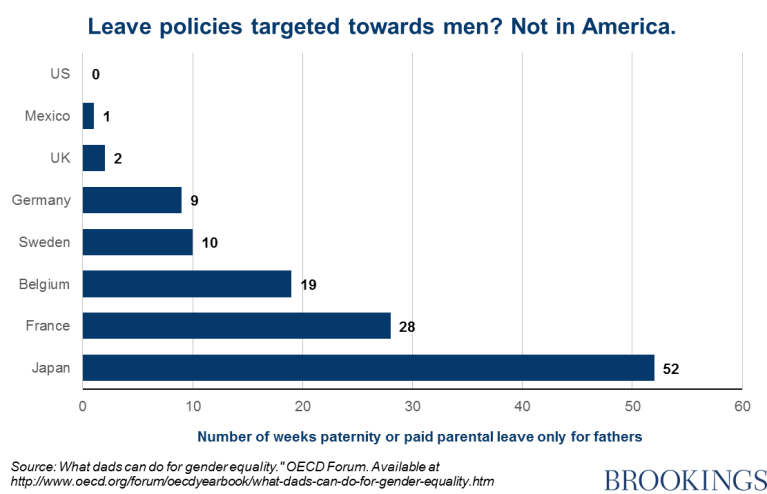Because this Sunday is Father’s Day, this week’s edition of Chart of the Week focuses on policies affecting the dads in our lives.
The case for paternal leave in the U.S.
Richard Reeves notes that the U.S. is one of the few advanced nations that does not have dedicate leave for fathers. “The gender revolution has been a one-sided effort,” he writes. “We have not pushed hard enough to put men in traditionally female roles – that is where our priority should lie now.” Reeves outlines the potential benefits of paternity leave, including a more equal division of labor among parents, less stress on the family, closer father-infant bonding, and higher pay for mothers.

The changing household structure
In a separate study, Reeves identifies the recasting of gender roles in the household as one ingredient to the modern successful marriage. “The women getting, and staying, married are the most economically independent women in the history of the nation,” he observes. “Independence, rather than dependence, underpins the new marriage.” Reeves notes that since the 1960s, fathers have more than doubled their time dedicated to housework and nearly tripled their hours of childcare, while mothers have more than doubled their hours of paid work.

Single-father households and the Earned Income Tax Credit
The Earned Income Tax Credit (EITC) benefits numerous low-income families each year, including households with single parents. The Brookings Metropolitan Policy Program, using its MetroTax model, found that 4.2 million single fathers were eligible for the EITC in 2014. Those 4.2 million fathers cared for 6 million dependents.
 Betsy Broaddus made significant contributions to this post.
Betsy Broaddus made significant contributions to this post.

Commentary
Charts of the Week: Fathers
June 14, 2019